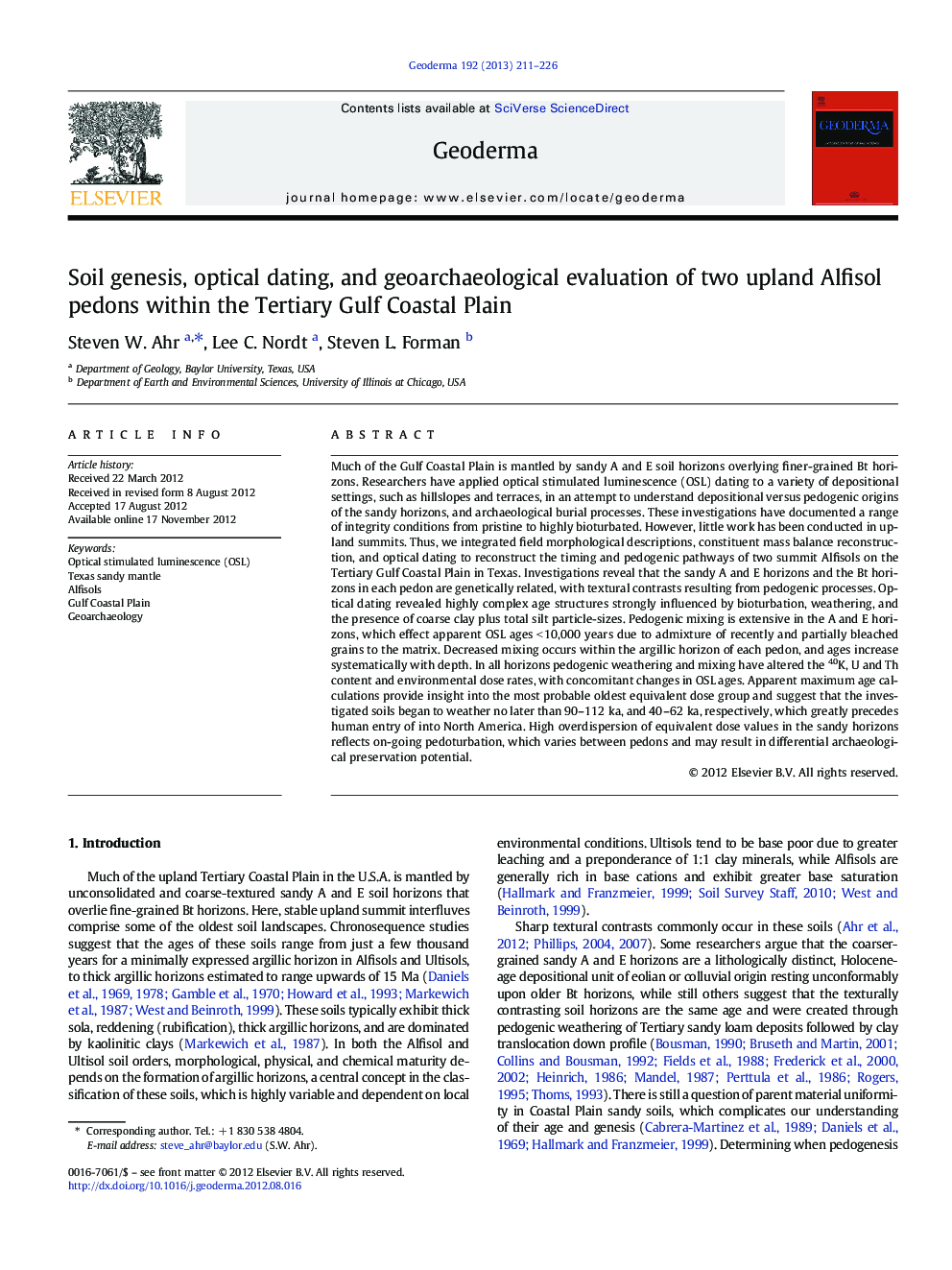| Article ID | Journal | Published Year | Pages | File Type |
|---|---|---|---|---|
| 4573769 | Geoderma | 2013 | 16 Pages |
Much of the Gulf Coastal Plain is mantled by sandy A and E soil horizons overlying finer-grained Bt horizons. Researchers have applied optical stimulated luminescence (OSL) dating to a variety of depositional settings, such as hillslopes and terraces, in an attempt to understand depositional versus pedogenic origins of the sandy horizons, and archaeological burial processes. These investigations have documented a range of integrity conditions from pristine to highly bioturbated. However, little work has been conducted in upland summits. Thus, we integrated field morphological descriptions, constituent mass balance reconstruction, and optical dating to reconstruct the timing and pedogenic pathways of two summit Alfisols on the Tertiary Gulf Coastal Plain in Texas. Investigations reveal that the sandy A and E horizons and the Bt horizons in each pedon are genetically related, with textural contrasts resulting from pedogenic processes. Optical dating revealed highly complex age structures strongly influenced by bioturbation, weathering, and the presence of coarse clay plus total silt particle-sizes. Pedogenic mixing is extensive in the A and E horizons, which effect apparent OSL ages < 10,000 years due to admixture of recently and partially bleached grains to the matrix. Decreased mixing occurs within the argillic horizon of each pedon, and ages increase systematically with depth. In all horizons pedogenic weathering and mixing have altered the 40K, U and Th content and environmental dose rates, with concomitant changes in OSL ages. Apparent maximum age calculations provide insight into the most probable oldest equivalent dose group and suggest that the investigated soils began to weather no later than 90–112 ka, and 40–62 ka, respectively, which greatly precedes human entry of into North America. High overdispersion of equivalent dose values in the sandy horizons reflects on-going pedoturbation, which varies between pedons and may result in differential archaeological preservation potential.
► This work investigates the age/genesis of Gulf Coastal Plain sandy mantle uplands. ► We integrate field morphology, constituent mass balance, and optical dating studies. ► Sandy horizons yield apparent OSL ages < 10,000 years due to pedogenic mixing. ► Weathering affects 40K, U and Th content, environmental dose rates, and OSL ages. ► The investigated soils began weathering 90–112 ka and 40–62 ka, respectively.
